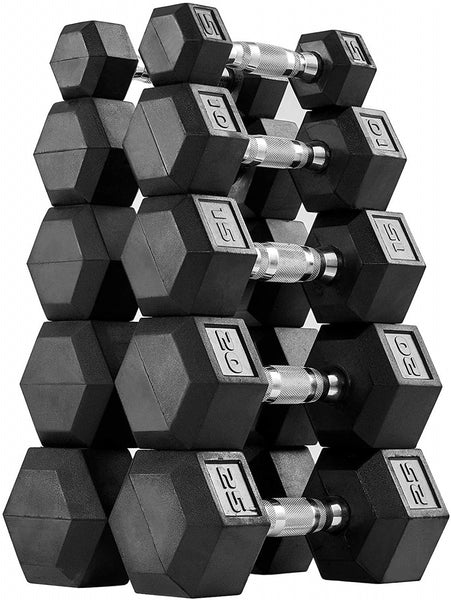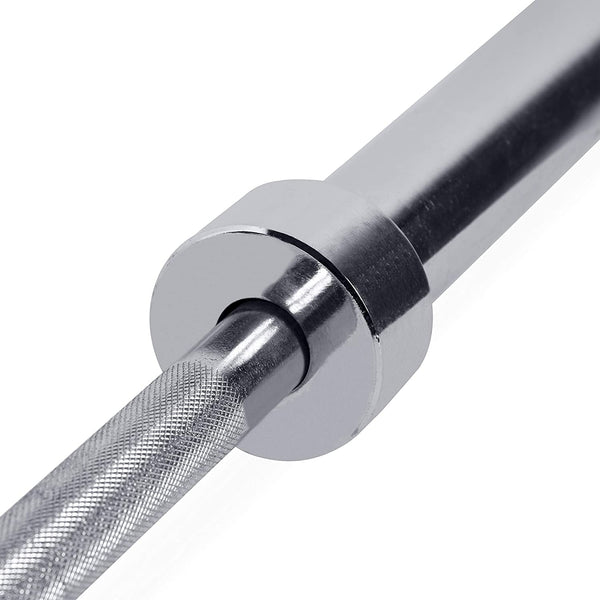Your Cart is Empty
October 18, 2023 3 min read
If you’re a gym goer, chances are that you want to get the most out of your bicep workouts. A well-structured biceps workout can help you target each part of the muscle, maximize your gains, and prevent injury. In this article, we’ll discuss how to structure the perfect biceps workout for maximum gains.
Shop The Collection: DumbbellsBefore we dive into the workout, let’s review what the bicep muscle is and why it’s important. The bicep muscle is located in the upper arm, along the front of the humerus bone. It’s composed of two heads: the long head and the short head. The primary function of the bicep muscle is to flex the elbow joint. When the bicep muscle contracts, it pulls the lower arm up towards the shoulder.
 Shop The Gear: MAGMA Rubber Hex Dumbbell Sets, from $64.99 USD
Shop The Gear: MAGMA Rubber Hex Dumbbell Sets, from $64.99 USD
Strong biceps are important for activities like chin-ups, push-ups, and other exercises that involve pulling the body weight. Developing strong biceps also helps to improve posture and reduce strain on the shoulders, neck, and back.
Shop The Collection: BarbellsNow that you understand the basics of the bicep muscle, let’s move on to how to structure the perfect bicep workout. Here are some tips to keep in mind when designing your workout routine.
 Shop The Gear: CAP Barbell Olympic Solid Bar, 5-ft, from $63.99 USD
Shop The Gear: CAP Barbell Olympic Solid Bar, 5-ft, from $63.99 USD
Compound exercises are multi-joint movements that engage multiple muscles at once. These exercises are great for building strength and muscle mass because they allow you to lift heavier weights. Examples of compound exercises for the biceps include chin-ups, bent-over rows, and barbell curls.
Start your bicep workout with a few sets of a compound exercise. This will help warm up the muscle and prepare it for the isolation exercises that you’ll be doing later on.
Isolation exercises are single-joint movements that target a specific muscle group. Examples of isolation exercises for the biceps include concentration curls, hammer curls, and cable curls. These exercises help to isolate the biceps and build strength and size in the muscle.
Include at least 2-3 sets of an isolation exercise in your bicep workout. Make sure to use a light weight for the first set and increase the weight as you progress through the sets.
To maximize your gains, it’s important to vary your reps and sets for each exercise. For example, you could do 3 sets of 10-12 reps for a compound exercise and then switch to 3 sets of 8-10 reps for an isolation exercise. By varying the reps and sets, you’ll ensure that your muscles are constantly being challenged and forced to adapt.
Rest between sets is also important for maximizing your gains. Aim to rest for 30-60 seconds between sets. This will give your muscles time to recover before the next set. If you don’t rest between sets, you won’t be able to perform at your best and you won’t be able to lift as much weight.
Finally, make sure to focus on proper form when performing your bicep exercises. Incorrect form can lead to injury and negatively affect your performance. Make sure to keep your core tight, chest up, and back straight when performing any exercise. Additionally, try to keep the tension on the muscle throughout the entire movement. Keep the weight under control and focus on squeezing the muscle at the top of the movement.
A well-structured biceps workout can help you maximize your gains and prevent injury. Start with a few sets of a compound exercise and then move on to isolation exercises. Vary your reps and sets and make sure to rest between sets. Finally, focus on proper form to ensure that you’re getting the most out of your workout. With these tips in mind, you’ll be on your way to building bigger, stronger biceps in no time!
Shipping Protection gives you peace of mind while saving you time and money.
Shipping Protection provides coverage for eligible orders that are lost or damaged in transit, or stolen after delivery has been confirmed by the carrier. MAGMA Fitness, through its partners, administers the protection program and may receive compensation for these services. Coverage is subject to the terms, conditions, and exclusions outlined in our Shipping Protection Terms & Conditions.